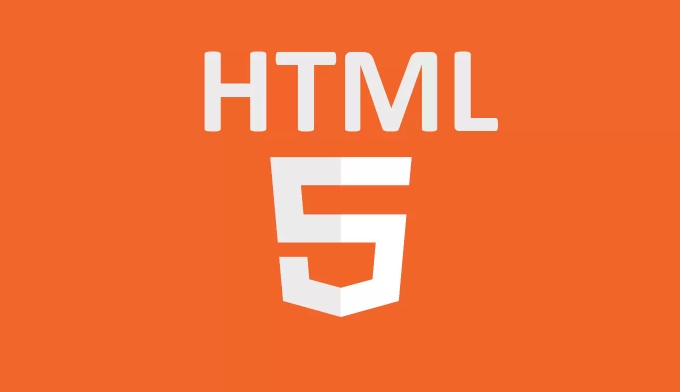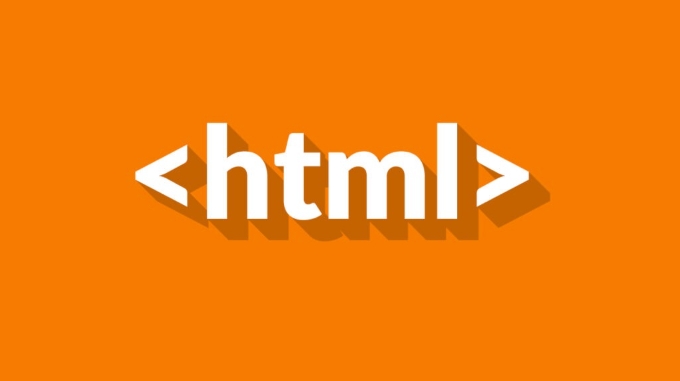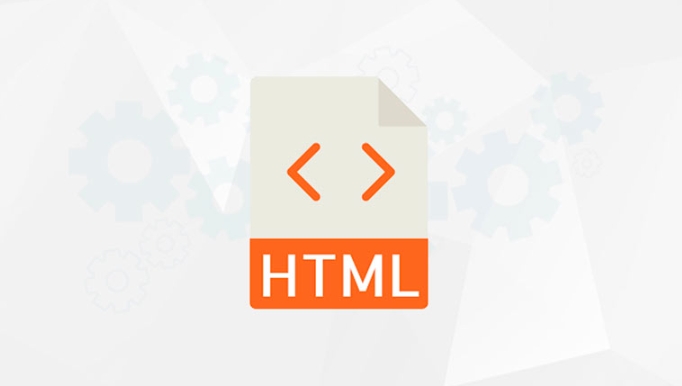 Web Front-end
Web Front-end
 HTML Tutorial
HTML Tutorial
 What are Server-Sent Events (SSE) and how do you use them with HTML?
What are Server-Sent Events (SSE) and how do you use them with HTML?
What are Server-Sent Events (SSE) and how do you use them with HTML?
Jul 10, 2025 pm 12:26 PMServer-Sent Events (SSE) is an HTTP-based HTML5 standard API that allows servers to push real-time data to clients one-way. 1. It establishes a persistent connection through the EventSource object. The server sends data in text/event-stream format, and each push triggers client event processing; 2. Simple to use, the front-end only needs to listen to message events or specific event types to receive and process data; 3. The back-end needs to set Content-Type to text/event-stream and continuously output messages that match the format; 4. Common precautions include solving cross-domain problems, controlling push frequency, testing browser compatibility, etc. Compared with WebSocket, SSE is lighter and suitable for scenarios such as notifications and stock updates that only require server push.

Server-Sent Events (SSE) is a technology that allows servers to push real-time updates to browsers. Instead of requiring the browser to poll repeatedly like the traditional request-response mode, it establishes a persistent connection where the server can send data to the client at any time. Compared with WebSocket, SSE is lighter and easier to implement, and is especially suitable for scenarios where only one-way push is required for servers, such as real-time notifications, stock price updates, log information, etc.

What are Server-Sent Events?
SSE is a standard API provided by HTML5 that allows web pages to receive automatic updates from the server. It is HTTP-based, so no special protocol or server settings are required. Unlike WebSocket, SSE only supports one-way communication from the server to the client, which means that the client can only listen and cannot actively send messages.
SSE uses the EventSource object to create a connection and receives data by listening to message events. The data returned by the server must be in a specific format ( text/event-stream ), and an event will be triggered every time new data is available.

How to use SSE in HTML?
To use SSE, you can do it in just a few lines of JavaScript:
<script>
const eventSource = new EventSource("your-server-endpoint");
eventSource.onmessage = function(event) {
console.log("Message received:", event.data);
};
</script>This code does three things:

- Created an
EventSourceinstance pointing to the specified URL. - Listen to the
onmessageevent, which will be triggered when the server sends data. - Print out the received data.
If the message sent by the server has an event type (such as notification ), you can also use .addEventListener() to listen for specific events:
eventSource.addEventListener('notification', function(event) {
document.getElementById('notifications').innerText = event.data;
});This way you can handle differently according to different types of events.
How to cooperate with the backend?
The backend needs to do two main points:
- Set the correct response header to
Content-Type: text/event-stream. - Continuously output messages that conform to SSE format.
For example, a simple Node.js Express interface might look like this:
app.get('/stream', (req, res) => {
res.setHeader('Content-Type', 'text/event-stream');
setInterval(() => {
res.write(`data: ${new Date()}\n\n`);
}, 1000);
}); This code will send the current time to the client every second. Note \n\n means that a complete message ends.
Different languages ??and frameworks have slightly different writing methods, but the core logic is the same: keep the connection open and continue to send content starting with data: :.
Frequently Asked Questions and Precautions
- Cross-domain problem : If the front-end and back-end are not under the same domain name, remember to set CORS, otherwise it may not be connected.
- Connection disconnection and reconnection : SSE will automatically try to reconnect after the connection is disconnected by default, but you can actively close it through
eventSource.close(). - Performance considerations : Although SSE is a long connection, it consumes little to server resources. However, you should also pay attention to controlling the transmission frequency to avoid stress caused by frequent pushes.
- Browser compatibility : Modern browsers basically support SSE, but you should pay attention to testing on mobile and old devices.
Basically that's it. Although SSE is not as powerful as WebSocket, it is sufficient in many practical application scenarios, and it is simpler to implement and has lower maintenance costs.
The above is the detailed content of What are Server-Sent Events (SSE) and how do you use them with HTML?. For more information, please follow other related articles on the PHP Chinese website!

Hot AI Tools

Undress AI Tool
Undress images for free

Undresser.AI Undress
AI-powered app for creating realistic nude photos

AI Clothes Remover
Online AI tool for removing clothes from photos.

Clothoff.io
AI clothes remover

Video Face Swap
Swap faces in any video effortlessly with our completely free AI face swap tool!

Hot Article

Hot Tools

Notepad++7.3.1
Easy-to-use and free code editor

SublimeText3 Chinese version
Chinese version, very easy to use

Zend Studio 13.0.1
Powerful PHP integrated development environment

Dreamweaver CS6
Visual web development tools

SublimeText3 Mac version
God-level code editing software (SublimeText3)
 Applying Semantic Structure with article, section, and aside in HTML
Jul 05, 2025 am 02:03 AM
Applying Semantic Structure with article, section, and aside in HTML
Jul 05, 2025 am 02:03 AM
The rational use of semantic tags in HTML can improve page structure clarity, accessibility and SEO effects. 1. Used for independent content blocks, such as blog posts or comments, it must be self-contained; 2. Used for classification related content, usually including titles, and is suitable for different modules of the page; 3. Used for auxiliary information related to the main content but not core, such as sidebar recommendations or author profiles. In actual development, labels should be combined and other, avoid excessive nesting, keep the structure simple, and verify the rationality of the structure through developer tools.
 How to group options within a select dropdown using html?
Jul 04, 2025 am 03:16 AM
How to group options within a select dropdown using html?
Jul 04, 2025 am 03:16 AM
Use tags in HTML to group options in the drop-down menu. The specific method is to wrap a group of elements and define the group name through the label attribute, such as: 1. Contains options such as apples, bananas, oranges, etc.; 2. Contains options such as carrots, broccoli, etc.; 3. Each is an independent group, and the options within the group are automatically indented. Notes include: ① No nesting is supported; ② The entire group can be disabled through the disabled attribute; ③ The style is restricted and needs to be beautified in combination with CSS or third-party libraries; plug-ins such as Select2 can be used to enhance functions.
 Implementing Clickable Buttons Using the HTML button Element
Jul 07, 2025 am 02:31 AM
Implementing Clickable Buttons Using the HTML button Element
Jul 07, 2025 am 02:31 AM
To use HTML button elements to achieve clickable buttons, you must first master its basic usage and common precautions. 1. Create buttons with tags and define behaviors through type attributes (such as button, submit, reset), which is submitted by default; 2. Add interactive functions through JavaScript, which can be written inline or bind event listeners through ID to improve maintenance; 3. Use CSS to customize styles, including background color, border, rounded corners and hover/active status effects to enhance user experience; 4. Pay attention to common problems: make sure that the disabled attribute is not enabled, JS events are correctly bound, layout occlusion, and use the help of developer tools to troubleshoot exceptions. Master this
 Configuring Document Metadata Within the HTML head Element
Jul 09, 2025 am 02:30 AM
Configuring Document Metadata Within the HTML head Element
Jul 09, 2025 am 02:30 AM
Metadata in HTMLhead is crucial for SEO, social sharing, and browser behavior. 1. Set the page title and description, use and keep it concise and unique; 2. Add OpenGraph and Twitter card information to optimize social sharing effects, pay attention to the image size and use debugging tools to test; 3. Define the character set and viewport settings to ensure multi-language support is adapted to the mobile terminal; 4. Optional tags such as author copyright, robots control and canonical prevent duplicate content should also be configured reasonably.
 Best HTML tutorial for beginners in 2025
Jul 08, 2025 am 12:25 AM
Best HTML tutorial for beginners in 2025
Jul 08, 2025 am 12:25 AM
TolearnHTMLin2025,chooseatutorialthatbalanceshands-onpracticewithmodernstandardsandintegratesCSSandJavaScriptbasics.1.Prioritizehands-onlearningwithstep-by-stepprojectslikebuildingapersonalprofileorbloglayout.2.EnsureitcoversmodernHTMLelementssuchas,
 How to associate captions with images or media using the html figure and figcaption elements?
Jul 07, 2025 am 02:30 AM
How to associate captions with images or media using the html figure and figcaption elements?
Jul 07, 2025 am 02:30 AM
Using HTML sums allows for intuitive and semantic clarity to add caption text to images or media. 1. Used to wrap independent media content, such as pictures, videos or code blocks; 2. It is placed as its explanatory text, and can be located above or below the media; 3. They not only improve the clarity of the page structure, but also enhance accessibility and SEO effect; 4. When using it, you should pay attention to avoid abuse, and apply to content that needs to be emphasized and accompanied by description, rather than ordinary decorative pictures; 5. The alt attribute that cannot be ignored, which is different from figcaption; 6. The figcaption is flexible and can be placed at the top or bottom of the figure as needed. Using these two tags correctly helps to build semantic and easy to understand web content.
 HTML for email templates tutorial
Jul 10, 2025 pm 02:01 PM
HTML for email templates tutorial
Jul 10, 2025 pm 02:01 PM
How to make HTML mail templates with good compatibility? First, you need to build a structure with tables to avoid using div flex or grid layout; secondly, all styles must be inlined and cannot rely on external CSS; then the picture should be added with alt description and use a public URL, and the buttons should be simulated with a table or td with background color; finally, you must test and adjust the details on multiple clients.
 How to embed content from another site using the html iframe tag?
Jul 04, 2025 am 03:17 AM
How to embed content from another site using the html iframe tag?
Jul 04, 2025 am 03:17 AM
Use tags to embed other website content into your own web page. The basic syntax is:, you can add width, height, and style="border:none;" to control the appearance; in order to achieve responsive layout, you can set the size through percentage or use containers to combine padding and absolute positioning to maintain the aspect ratio, while paying attention to cross-domain restrictions, loading performance, SEO impact, and security policies. Common uses include embedding maps, third-party forms, social media content and internal system integration.





